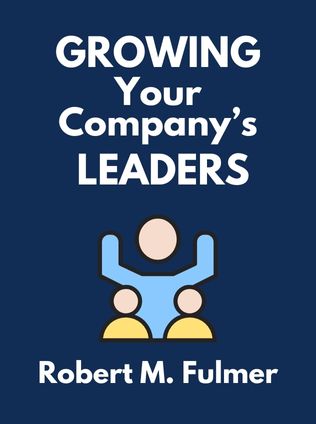
Growing Your Company’s Leaders
How Great Organizations Use Succession Management to Sustain Competitive Advantage
By Robert M. Fulmer,
Published 01/2008
About the Author
Robert M. Fulmer and Jay A. Conger are esteemed experts in the field of leadership and management development. Robert M. Fulmer is a distinguished professor at Pepperdine University and an acclaimed author of several books on leadership, including Leadership by Design and The Leadership Investment. Jay A. Conger, a senior research scientist at the University of Southern California and a faculty member at London Business School, has contributed significantly to the literature on corporate governance and leadership. His works include numerous books and research articles that delve into the intricacies of leadership and organizational behavior.
Main Idea
Growing Your Company's Leaders explores the evolving landscape of succession management and its critical role in sustaining a company's competitive advantage. The book underscores the shift from traditional succession planning, which focused merely on replacing top executives, to a modern approach that emphasizes developing talent throughout the organization. Fulmer and Conger argue that in today's dynamic business environment, where skilled employees are highly mobile, companies must adopt proactive succession management practices to retain and develop their best talent. The book offers insights into best practices from leading companies, demonstrating how an integrated approach to succession and talent development can drive organizational success.
Table of Contents
- New Imperative: The Evolution of Succession Management
- Who Owns Succession Management?
- Defining and Identifying Talent
- Linking Succession to Development
- Measuring and Assuring Long-Term Success
- Promising Trends in Succession Management
New Imperative: The Evolution of Succession Management
The traditional view of succession management was narrowly focused on replacing senior executives, assuming they would leave due to retirement or other circumstances. This approach, often conducted as an annual HR exercise, lacked depth and foresight, primarily serving as a contingency plan rather than a strategic initiative. However, as Fulmer and Conger elucidate, modern succession management systems have evolved significantly. They are now intricately linked with talent development strategies, emphasizing the identification and cultivation of potential at all levels of the organization.
"Contemporary systems no longer think solely about the replacement of talent. They are also focused on development. These new systems take a more systemic approach toward the organization's talent and strategy, placing more emphasis on the candidate's potential than on recent performance alone." - Robert M. Fulmer and Jay A. Conger
This paradigm shift recognizes that potential often outweighs current performance, and succession planning is no longer confined to the top echelons of management. Companies now understand the necessity of developing a robust pipeline of talent, capable of stepping into key roles as the need arises. This approach not only mitigates the risk associated with unexpected departures but also fosters a culture of continuous development and learning within the organization.
Sign up for FREE and get access to 1,400+ books summaries.
You May Also Like
The Lean Startup
How Today's Entrepreneurs Use Continuous Innovation to Create Radically Successful Businesses
By Eric RiesWho Moved My Cheese?
An Amazing Way to Deal with Change in Your Work and in Your Life
By Spencer Johnson, M.D.Make Your Bed
Little Things That Can Change Your Life...And Maybe the World
By William H. McRavenThe Ride of a Lifetime
Lessons Learned from 15 Years as CEO of the Walt Disney Company
By Robert IgerThe Hard Thing About Hard Things
Building a Business When There Are No Easy Answers
By Ben Horowitz



















